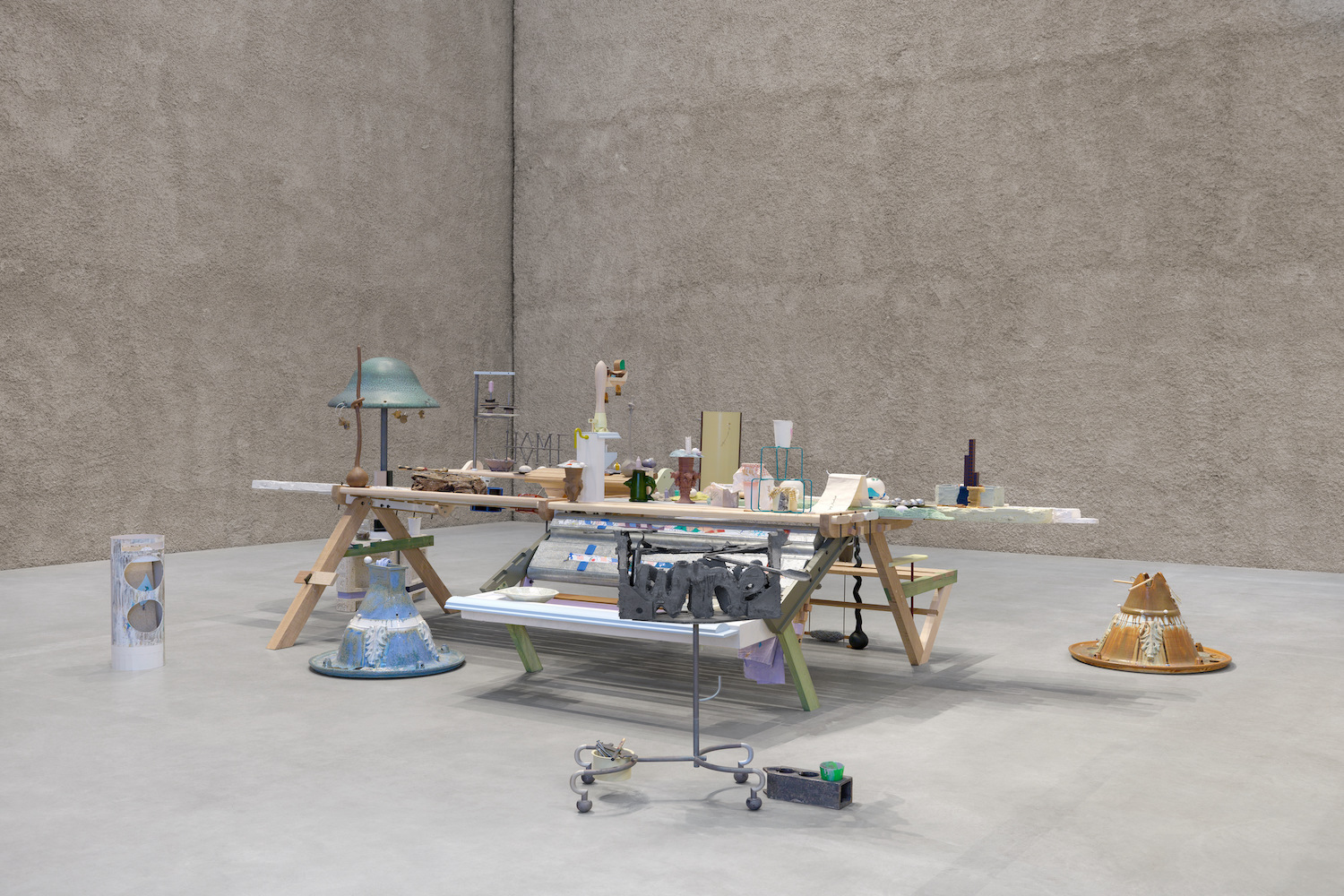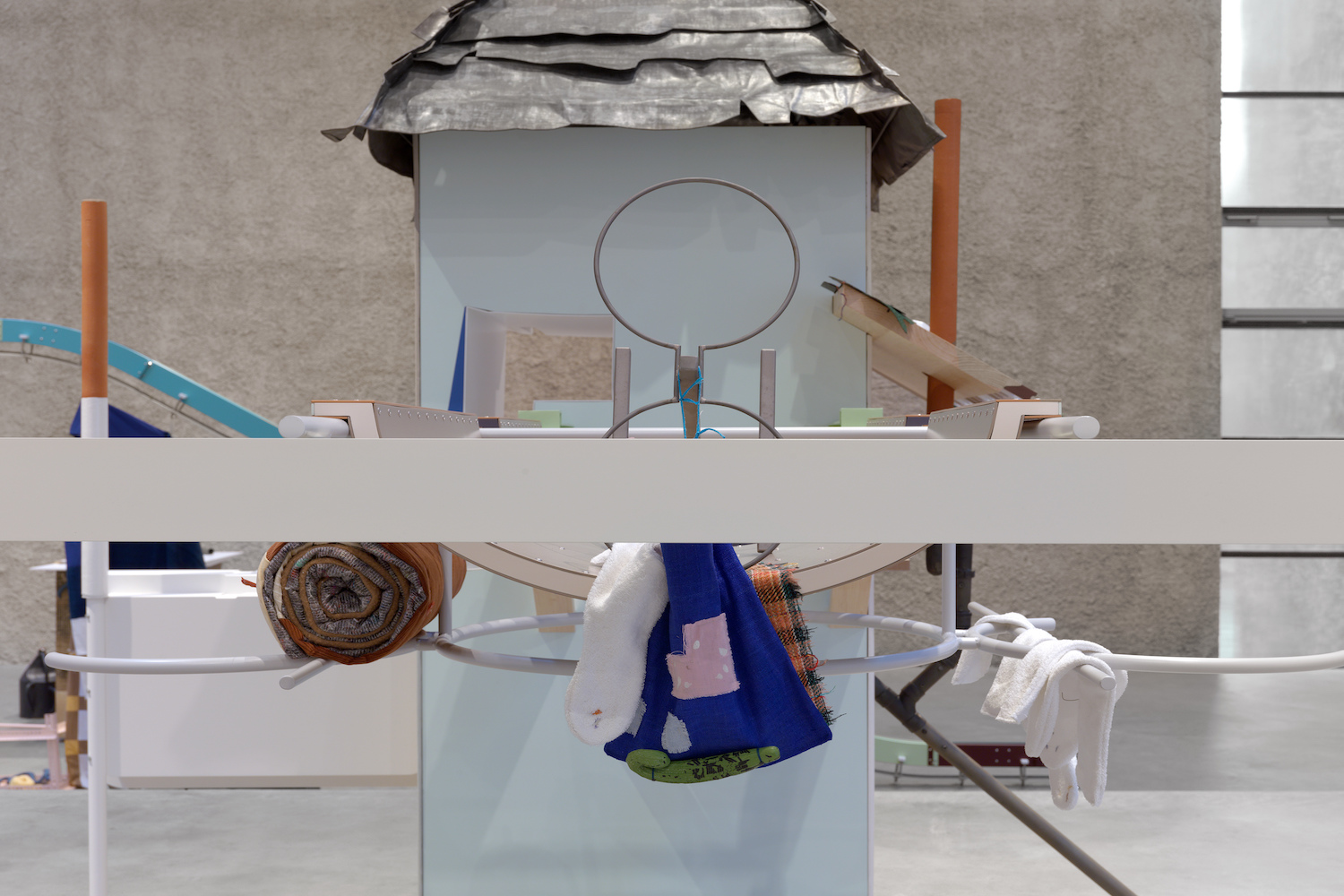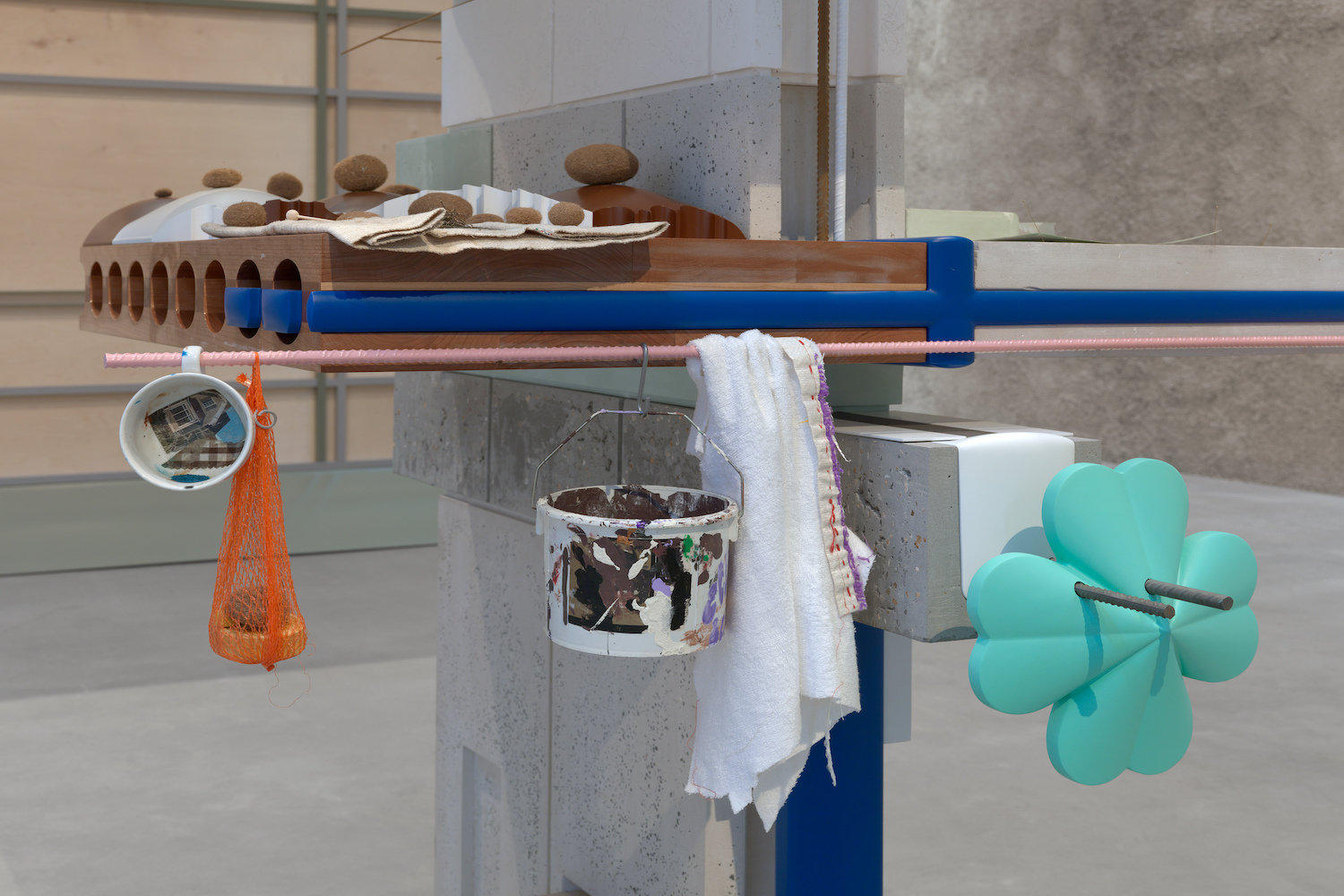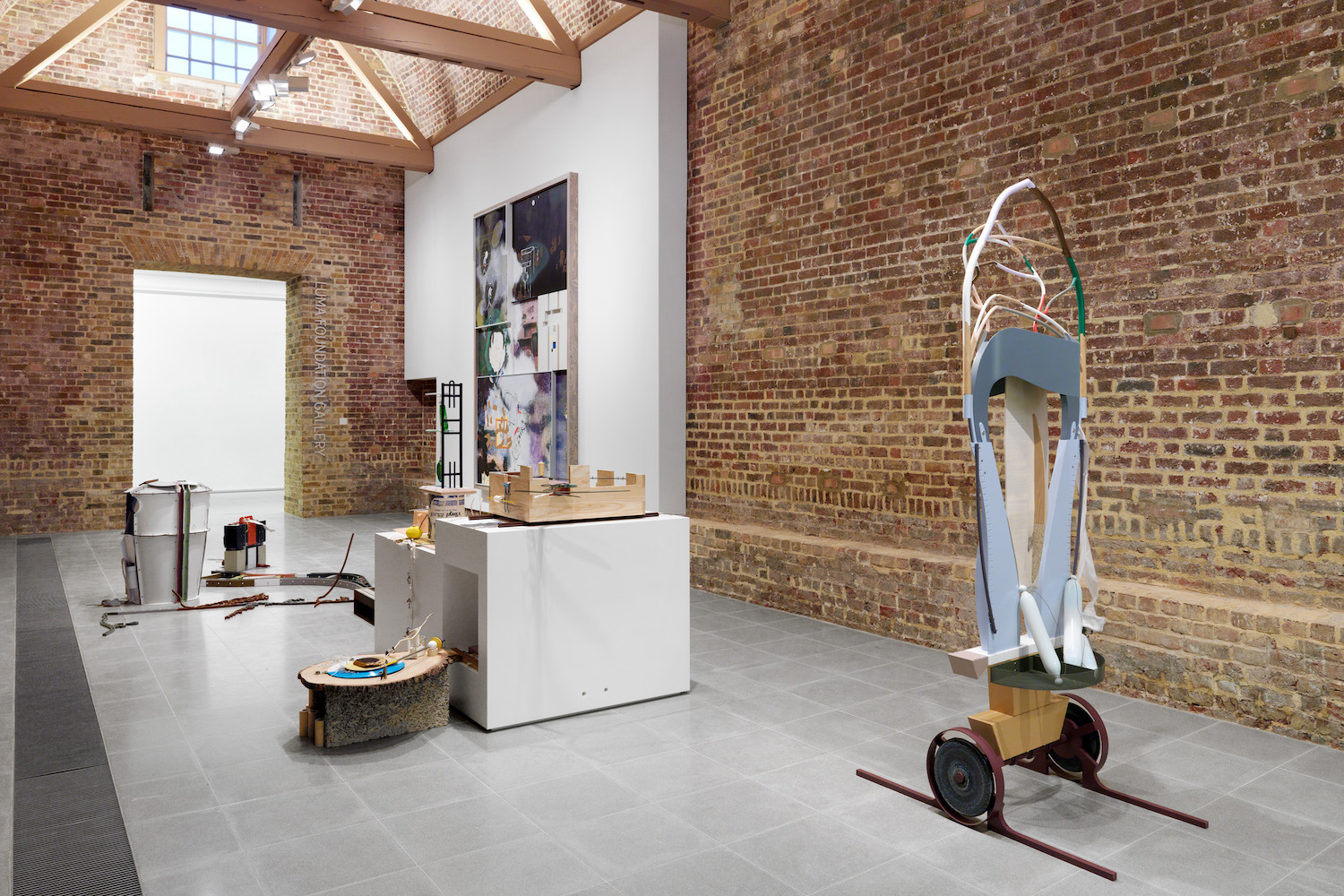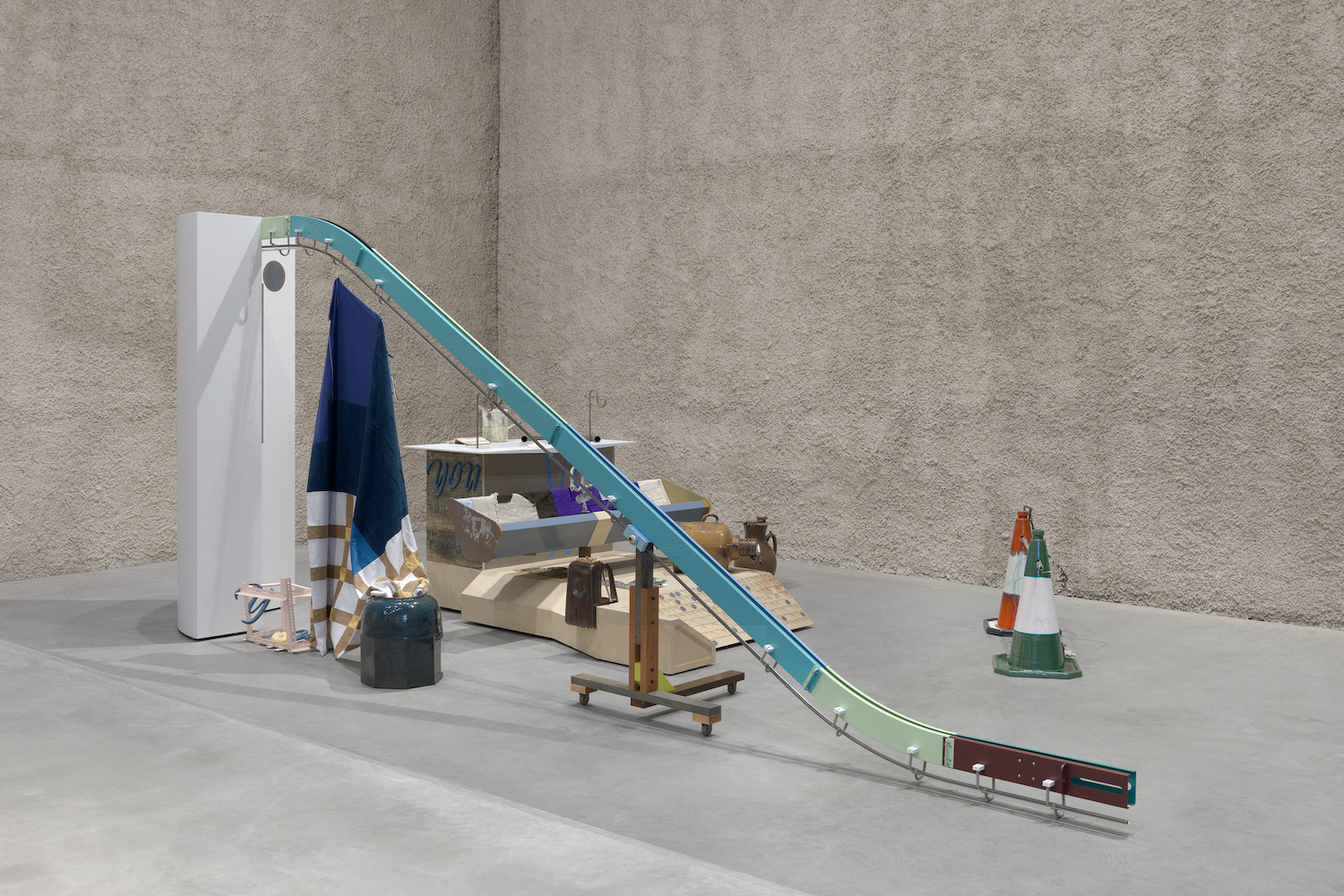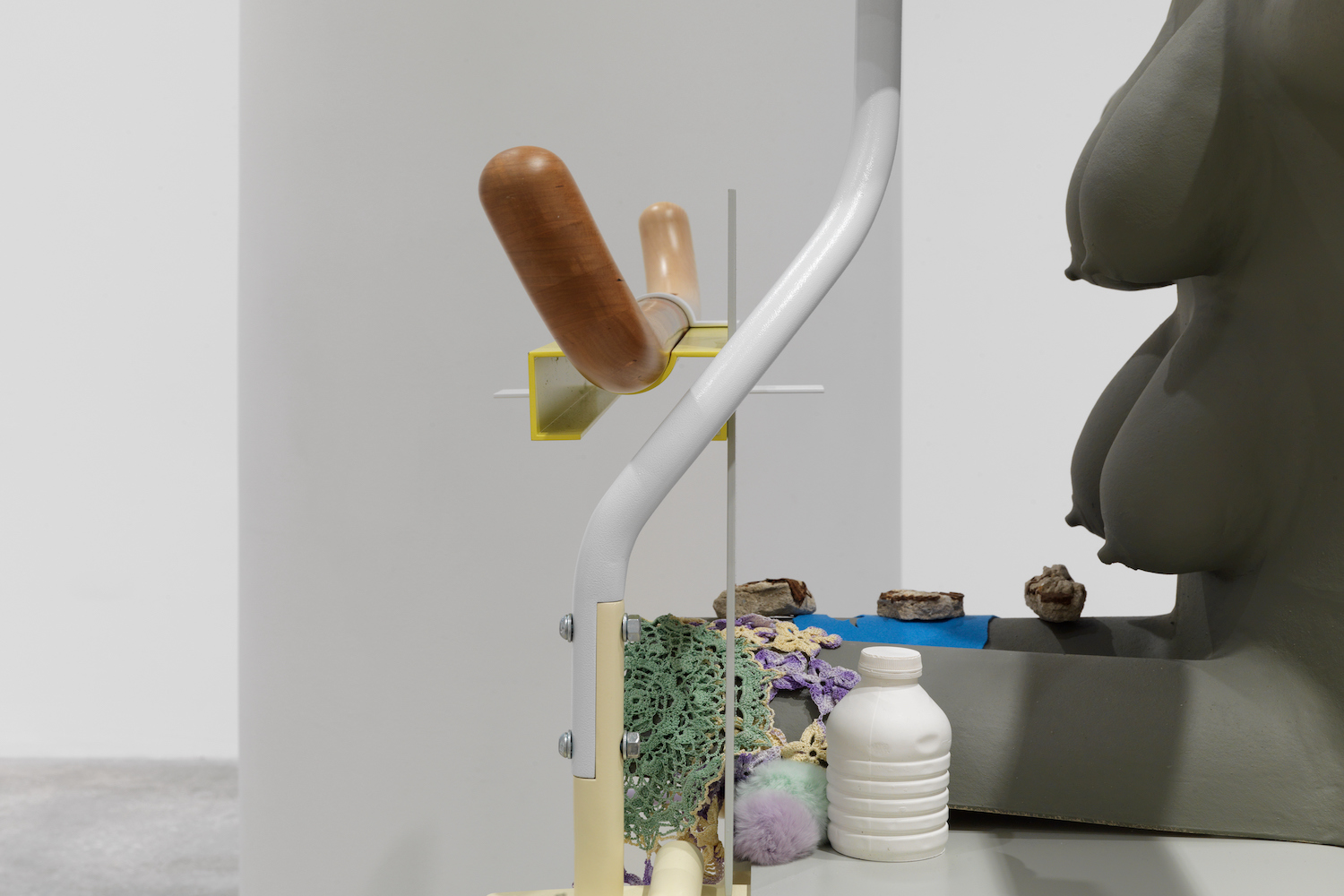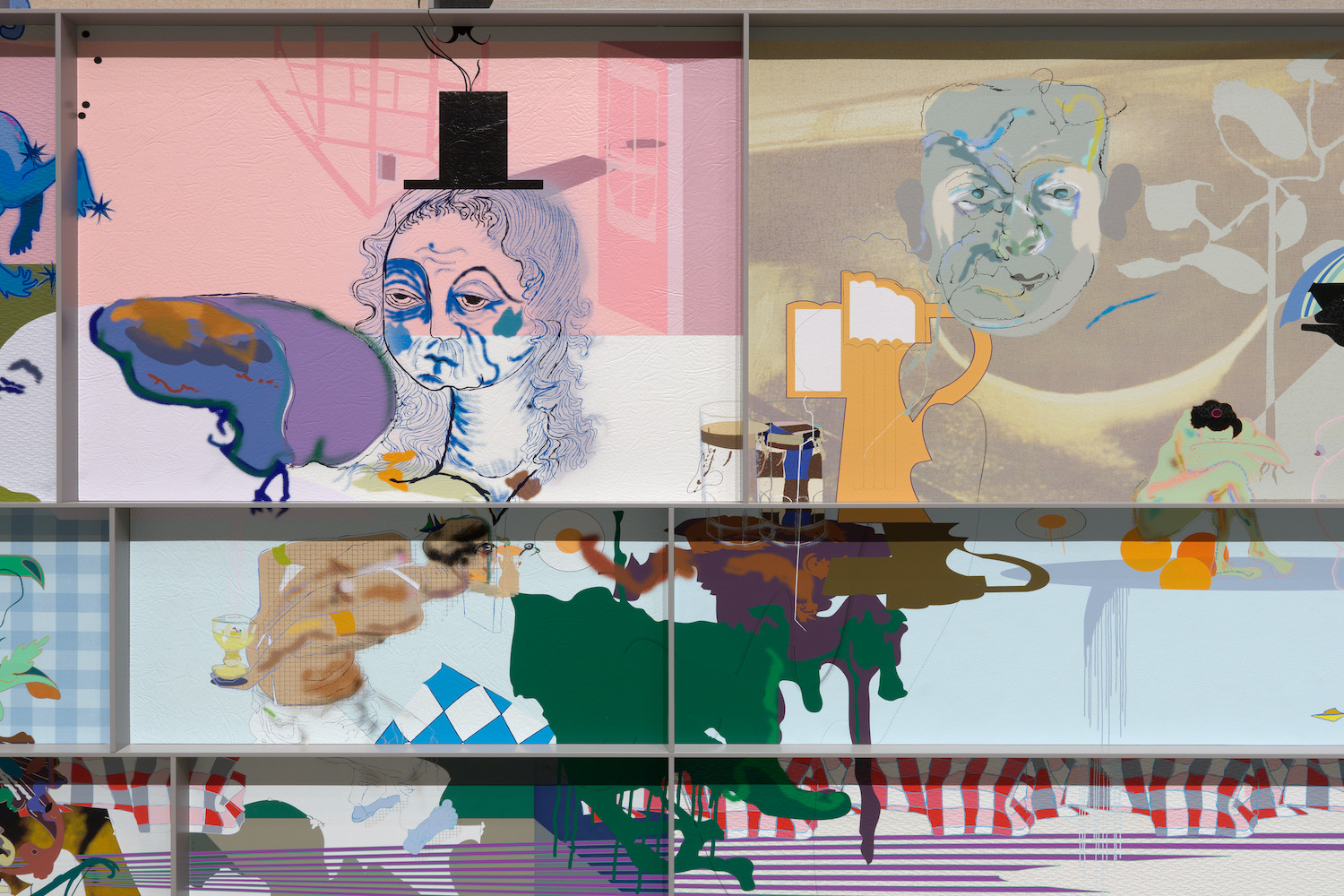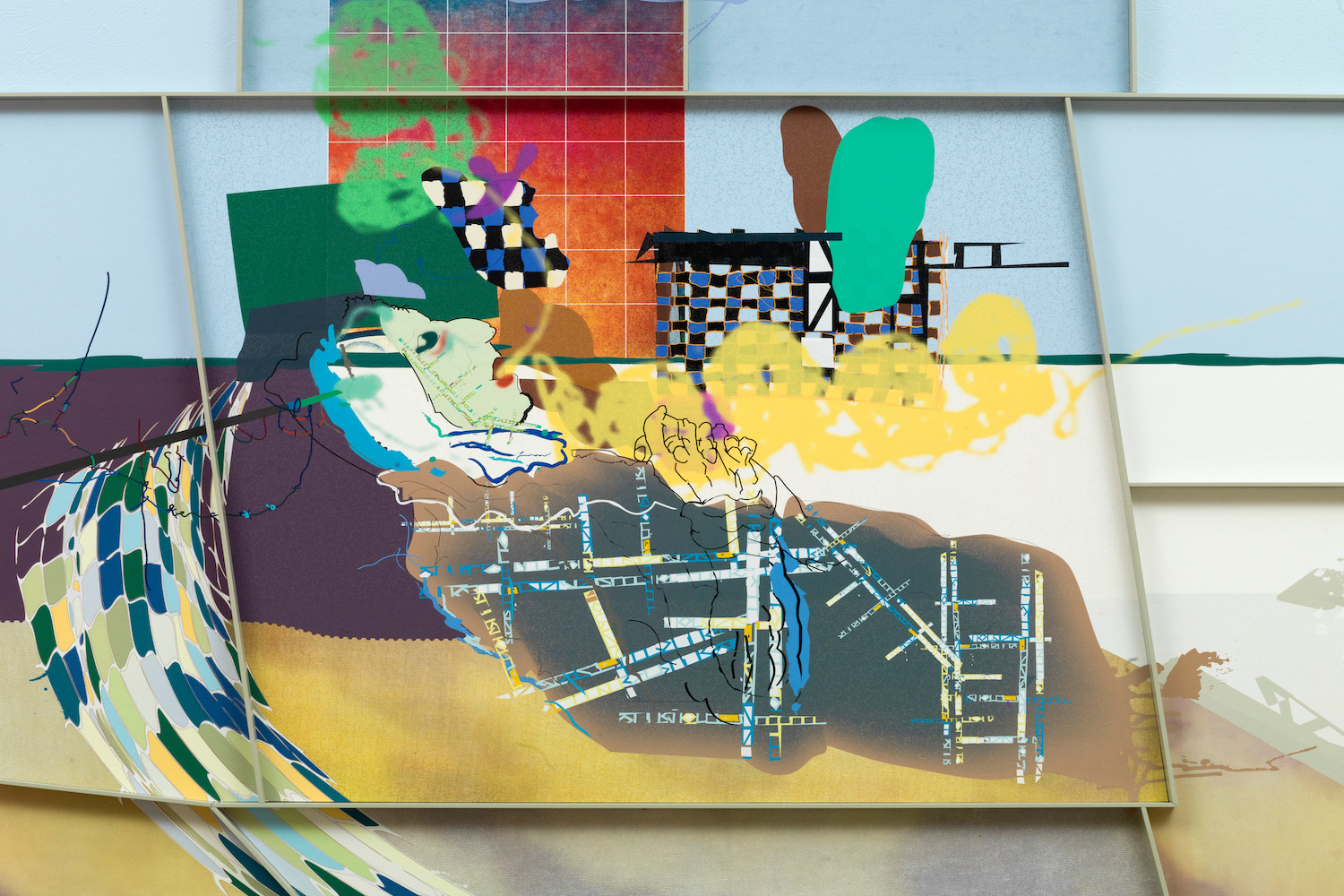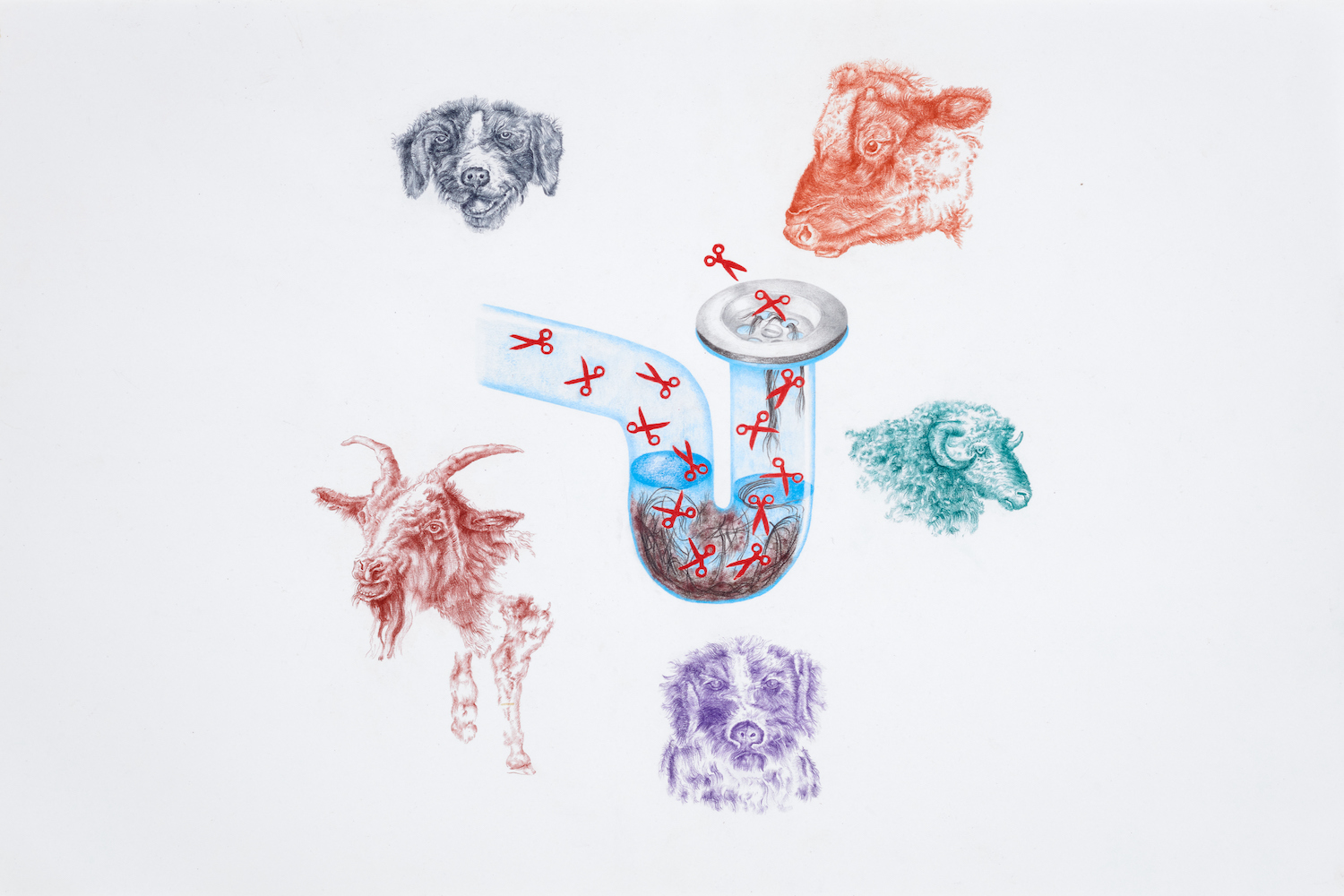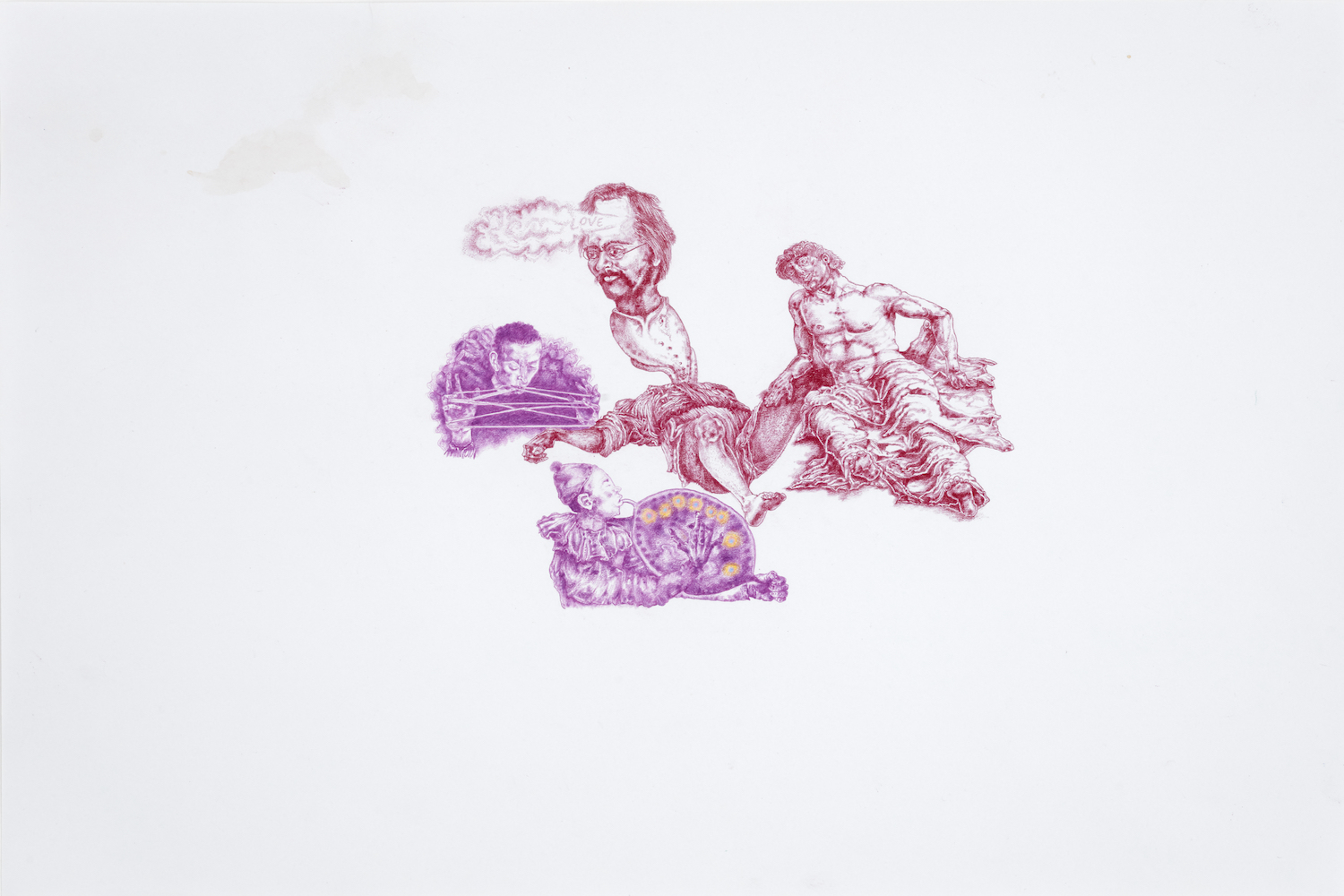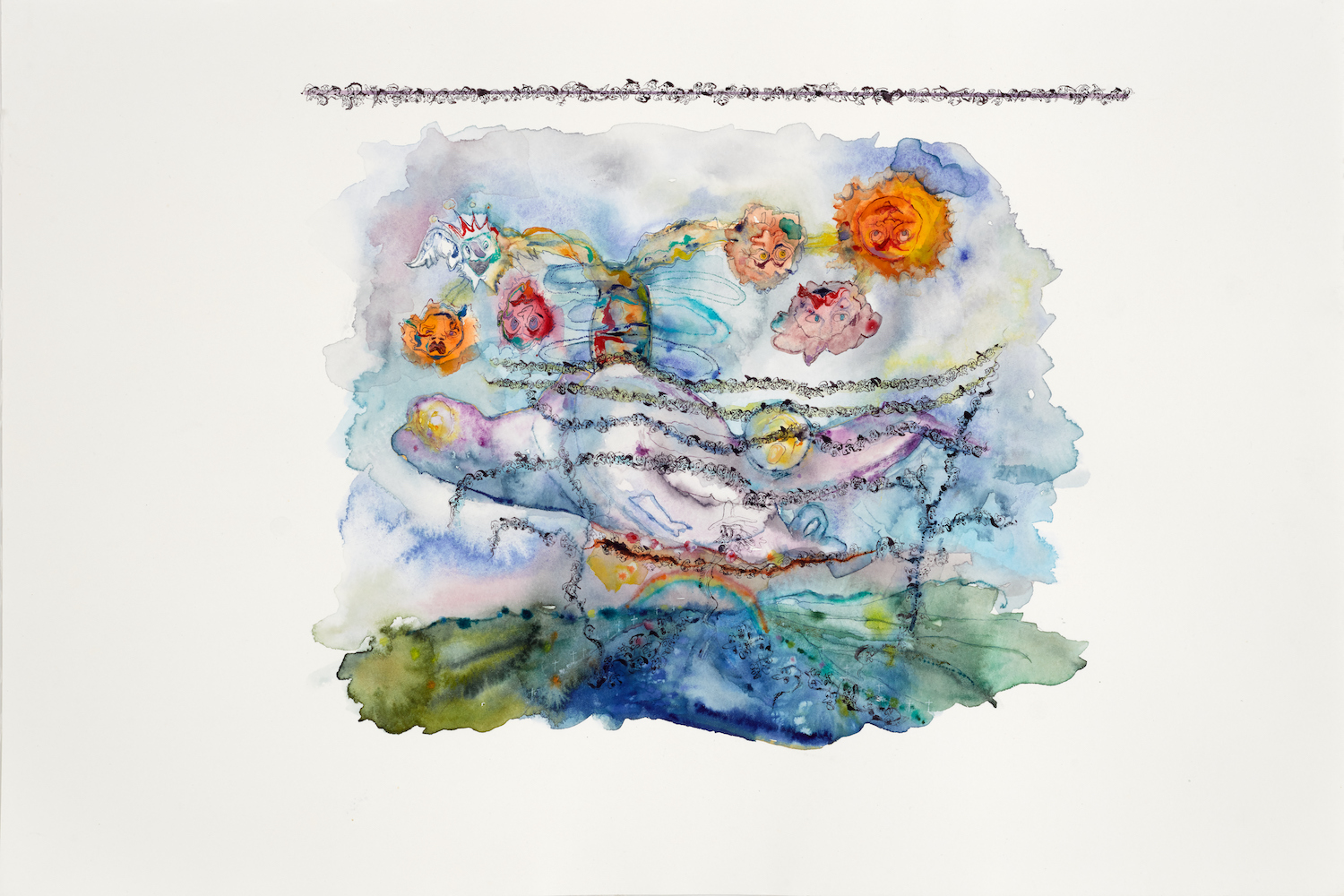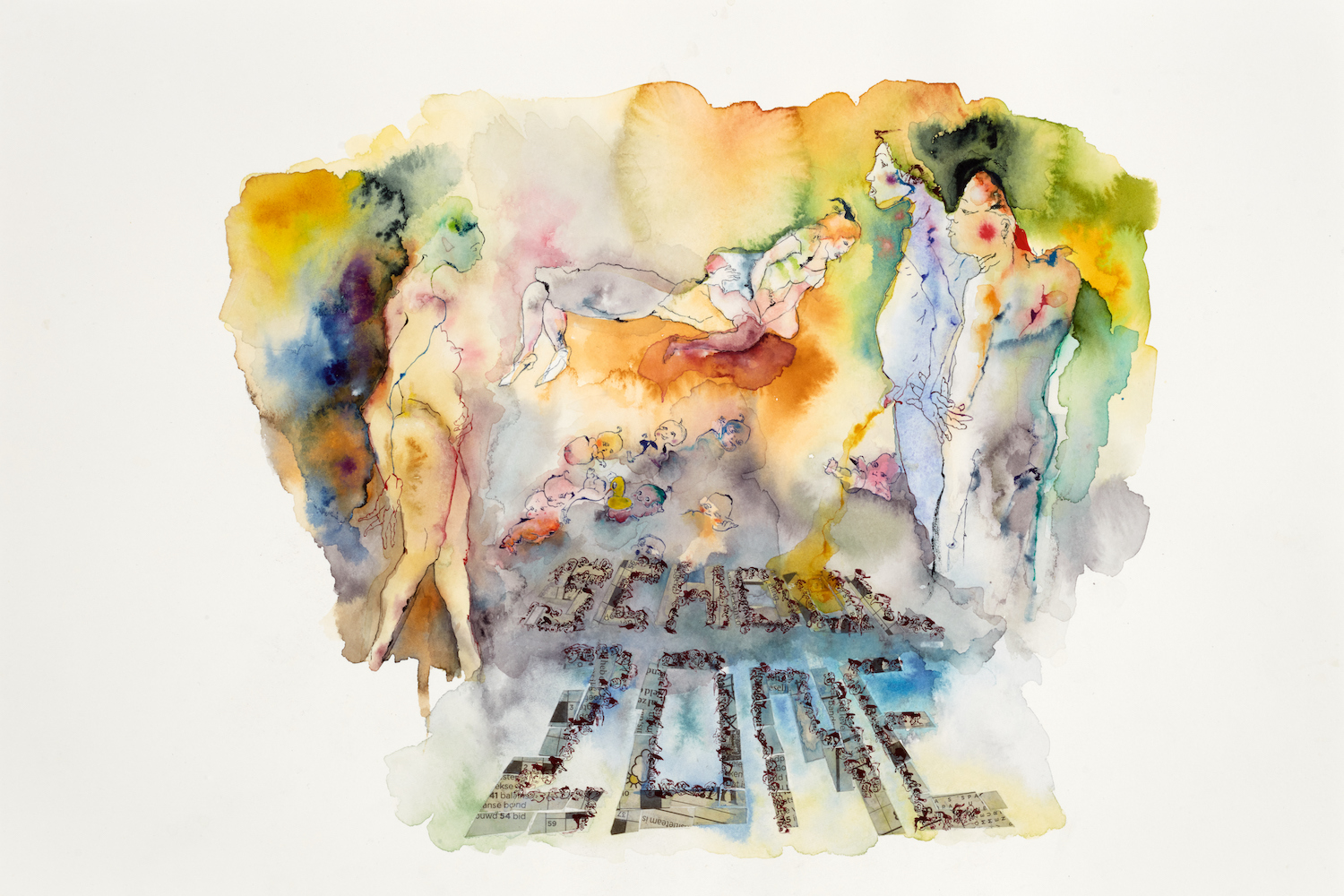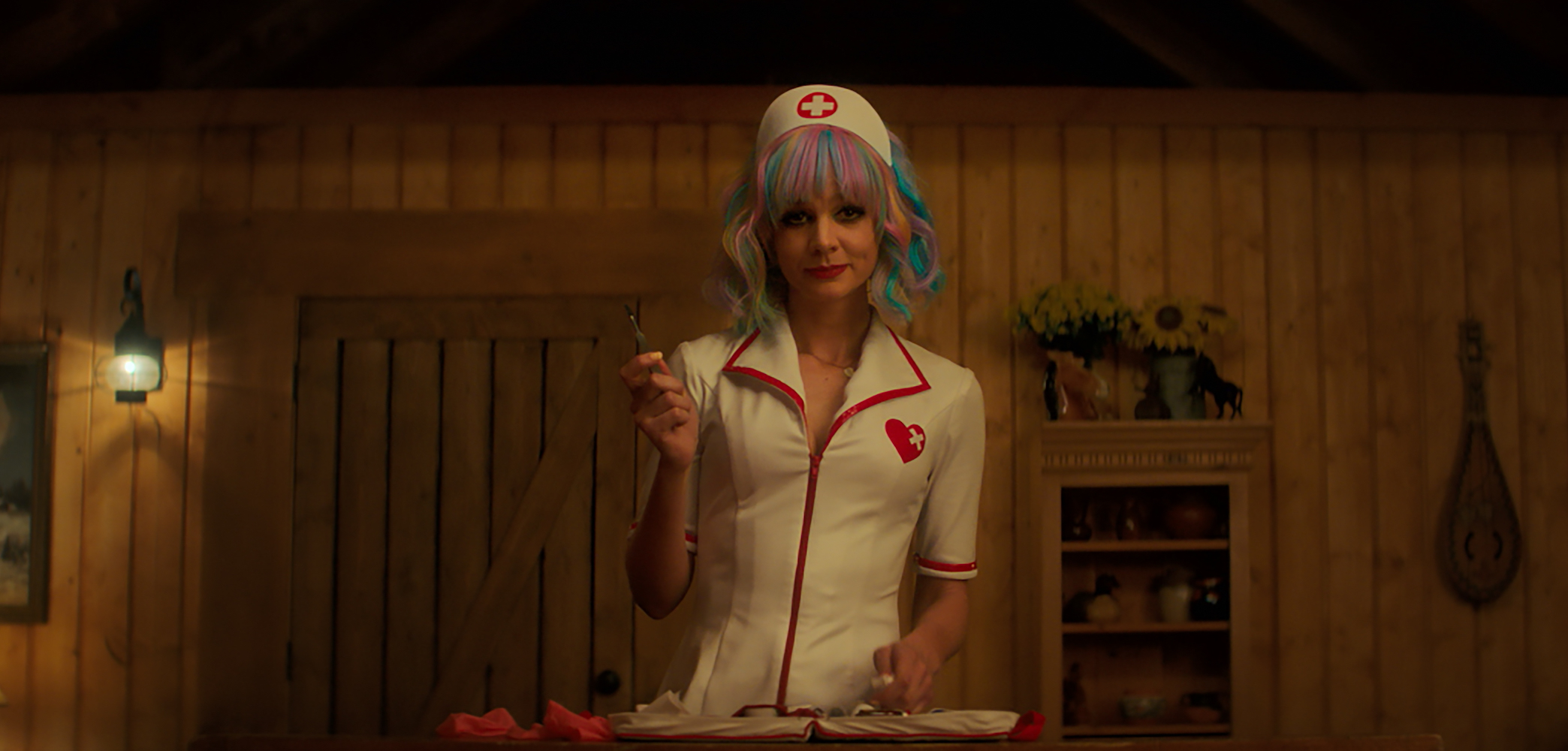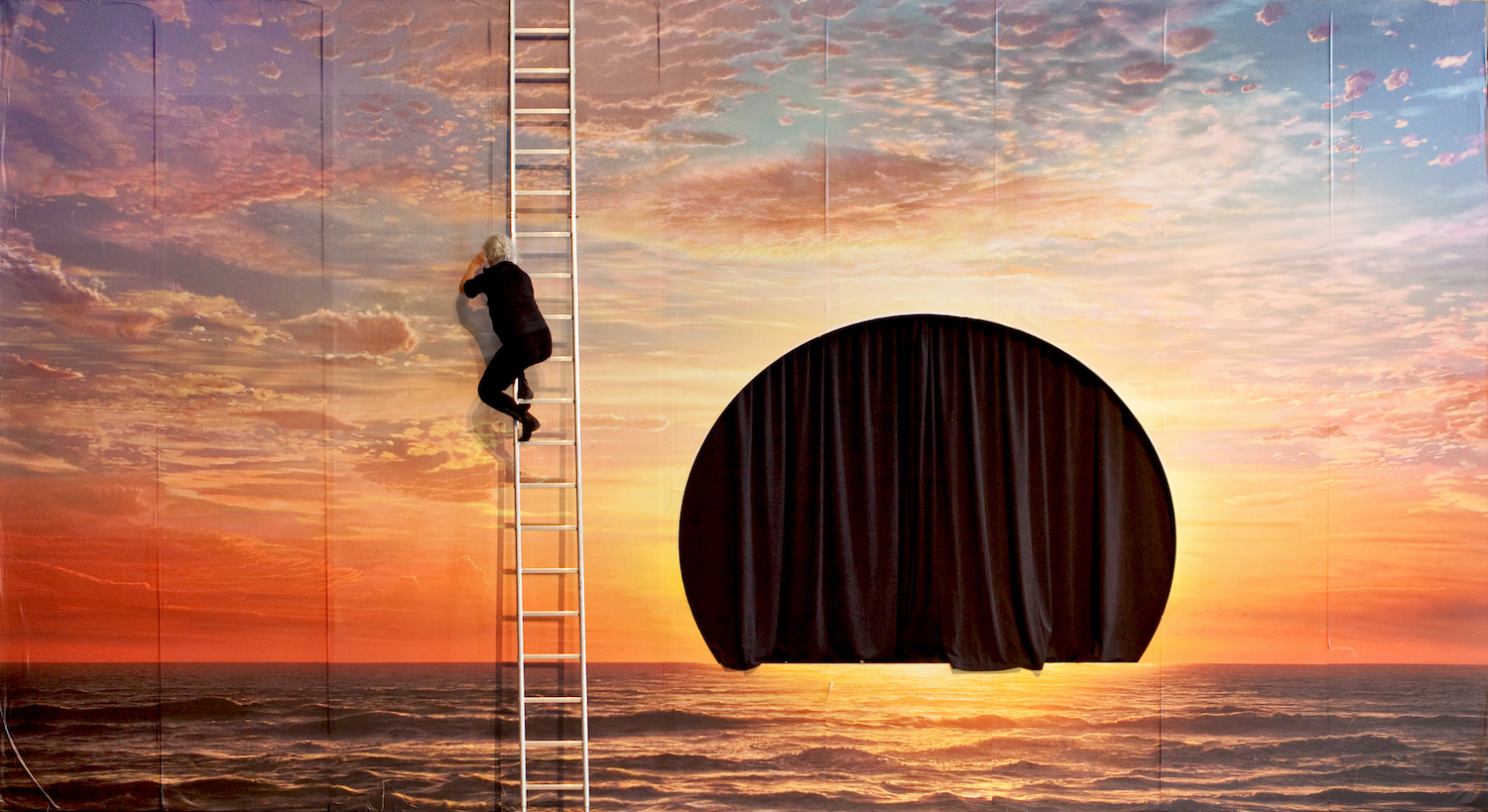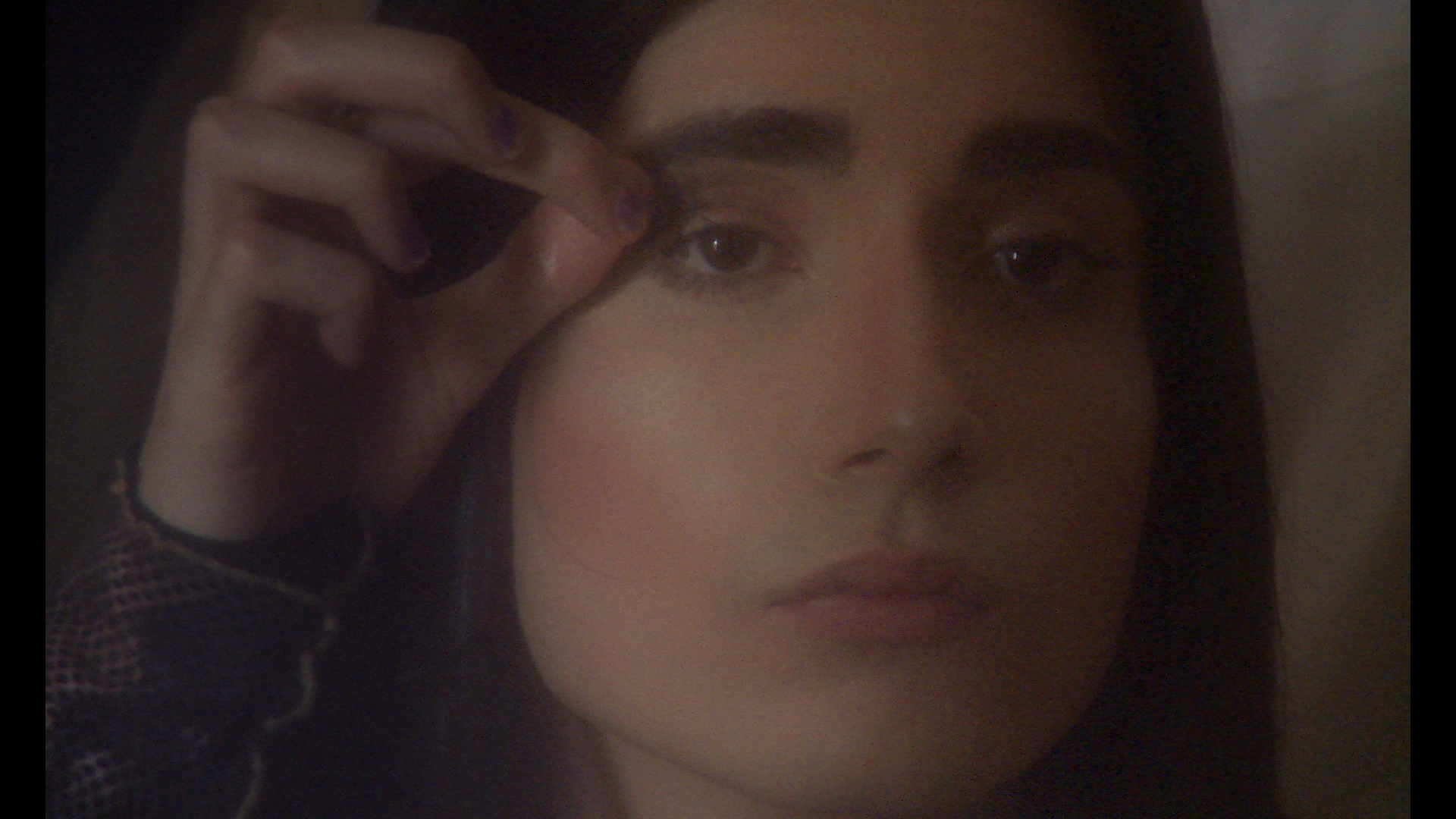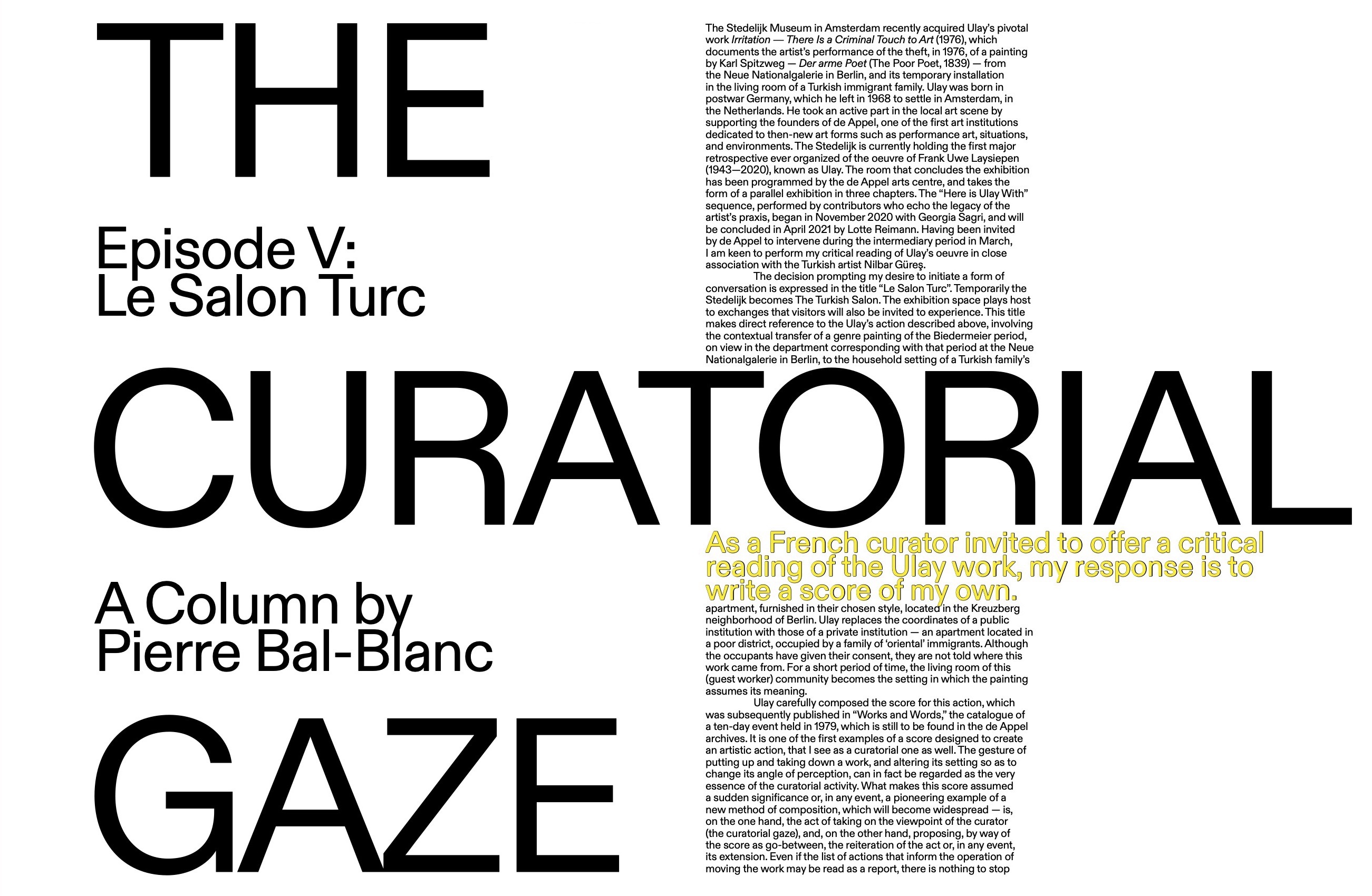Approximation
“It is said that our eyeballs record the last thing we see before we die. That there is a biological pigment locked tight in the back of the retina whose proteins bleach in light and recover in the dark, leaving some images outlined like drawings in a coloring book. Maps, of a sort.”
Squint, and there is the impression of relationships among constituent parts, as well as a relationship to us. Isolate, detectable, insistent. Motions, feelings of being hauled up and held to sunlight: archaeological, disinterred, gridded. Eddying, though, such that you might find yourself asking: What holds me together?
Encryption seeping and surface teeming, the sculptures of Helen Marten fixate at their simmering whisper of integrity, often characterized by the echo of the diagram.
The diagram is a means to signal the movement of logic; it is template and guide that depends on a predictable conversation between parts; it is communication, pressure, equation. It depends, too, on the presumption of efficacy and calculability; the diagram erases leeway, is strict: dia (through), graphein (write). A body, though, may relish the sense of when sense gives way, the gape and slosh of it all. In ruse and rebus, the brain may see before the eyes. And so with Marten’s tentacular, rhythmic sculpture, a substratum of diagram thrusts into the world afresh.
The industrial, trashed rococo of everyday life is made heady and rhetorical in Marten’s installations — loose schema lashed with strings of metaphor and glittering in obliquity such that their affinity and adjacency of elements irrupt causal inclination, pervert dependable outcome.
In lipping legibility, Marten’s sculptures often function like texts with coins, clips, doilies, matches, fish skins, bike chains, ear buds, dried limes, and marbles stringing grammar. Yet unlike conventions of clarity in structure and sentence, Marten’s content poaches in its own passion with tautology and imbroglio.
The works’ articulacy is realized in approximation of detectability, the point at which something rather blatant has been processed to crisis point, its dregs made exuberant, difficult, generous.
Material
“Two weeks ago she bought a sweet white loaf from the Mexican store on the corner. Anxious and bothered in packaging of orange and blue. The loaf was already cushioned by a little dumpling of air, by yeast and steady heat. One of those loaves so heaped with sugar it could already be fifty years old, baked up with floury moths and pubic hair.”
Hand on wood: heady dignity. Hand on steel: extemporaneity, suspension, thirst. Hand on birthday cake: buttery, effusive, mocking. Hand on leather: entrepreneurial, sleazy, scaly. The touch of materials lets us imagine its metaphoric power.
Marten’s work reminds us that material has its own temperature, density, and behavior. Her sculptures revive the social dimension of material — that it can be extruded into images, stylized to perform or masquerade its substance even as it sheds function, history, and definition.
Consider, for example, some of the materials that make up The Lemon (2016): “ash, cherry, chipboard, glazed ceramic, blown glass, cast Jesmonite, gold leaf, cotton spools, heating filament, lace, vinyl, twig, neoprene rubber, sand, sugar, oyster shell.” This exhaustive taxonomic list lets us know the basic mapping: we can distinguish its parts like ingredients, but the list also underwrites the tautological intensity of its reception — we review the very sugariness of the sugar against the rubber, for instance, or the pockmarked pebbled-ness of arranged stones. The material redoubles, compels orality. The Lemon, in short, has so much content! It is particulate and brittle, graphic and purled such that discerned minutia are at risk of folding or translating into one another.
With its oh-so-libidinal stew of vibrant matter and overspill, Marten’s sculptures are necessarily entangled by their formal antithesis: a husking down of things to sheer geometry.
Where readable objects, signs, and stuff — a cat, a lemon, a light bulb — are treated to a critical point of induced disintegration, they may also be whittled to such an extreme that they begin to communicate in a mere handful of wisped lines. Vector becomes substance. Mere line is also a mouth, it is a vocalizer, stammering or gushing in communication. Despite being flakes of outline, the vector, like so much of how Marten considers material, can contain a wealth of “information.” Think of cartoons: the transposition of attitude and form with sheer brevity; the plasmatized melt and pop of caricature; the hand-drawn line skittish, excited, and packed with impossible life. As Marten writes in a “lexicon” for the catalogue of “Drunk Brown House,” her 2016 show at the Serpentine Gallery in London: “The cartoon is a paradox of a thing, defiantly promoting substance, but jellied by an impossibility to spring off the page.” See, for instance, Marten’s recent selection of intricate colored-pencil drawings and watercolors invoking children’s story illustration, flowcharts, and systems of language ever prone to the knotty chaos and celerity of images. See a plumbing trap blocked by matted hair and tiny scissors snipping clearance much like – – – indicates cut here. See noughts and crosses in the trees, tiny daisy-chained faces as crumbly borders.
Watercolor is a stirring emollient for Marten’s imagination — the blotch and stain and seepage of it. Inky edges pool into thought bubbles, reminiscences, desires, or fears.
Skin
“Skin learns trace imprints, cold and pressure. It unfortunately learns pleasure and heat too and, like a superficial fungus infection, once you go there there’s really no way back.”
While material and vector occasion their individual substance and tempo, what of these surfaces and skins? The increasing fragmentation of a sculpture is the consequence of zooming in and, in spite of this particulate deconstruction, which suits embodied reading, many of Marten’s surfaces seem laminate and smooth, as if to accentuate some unclean subtext. Lamination delivers a tight, forced surface of layers that could exist separately but in their mergence soon resolve into stylized aggregate. The laminate surface of the leather and ostrich fabric (re: leatherette) screen prints in Geologic amounts of sober time (Mozart Drunks) (2012) compress flatness and defy volume. A hugely magnified, caricatured face of Mozart obscures the background, and yet its overstated features both outline and nullify pictographic clarity: the face is hollow cipher or graphic template.
Accented with unfastening zip motifs, Marten stresses the fullness of the vector and line — that it can be undone, be flimsy or bent.
In detail, the skins of Marten’s sculptures may be feverishly engorged or stylized: frosted, fibrous, fleecy, starchy, ossified, glazed. Each shift in surface returns the sculpture, like the diagram, to a readable motion. The decipherable object, malformed detail, and surface treatment mobilize the sculptural schema like a sentence, shifting in tone and temperature, driven by relation. Bruising, for instance, might give pause, its fullness of surface information on the skin suggestively evanescent; a polo mint with its artificial menthol rinse is basic, urban, obstinate; a fat squash of sponge yearns in the mind for saturation, its prosaic use so throbbing and distinct it should be in parentheses. Marten’s them, us, and you (2018) sculptures for “Fixed Sky Situation” at Berlin’s König Galerie are imitative models of domestic environments — supplementary forms overloaded by appendages, kitsch trinkets and ligaments, desiccated stand-ins, gaudy interlocutors, or wilted representations of the homely. In Water Fidelity (them) (2018), a roofed hut bursts a branch of plumbing, with signs about its assemblage reading “host” and “service.” People, terms in barking (us) (2018), a voluptuary, languorous workbench, is full of Marten’s alimentary impulse.
What else might it become? A carpenter’s workstation beclouded in desperation, erratic and drastic? A pop-up boutique display of crapulent ceramics? A Frankensteinian laboratory to constitute oneself, with eggs and pots picked out like items of scientific relevance?
Action
“And each brick, with all its acid brothers and acid sisters of mortar and their uniquely aggregated pity, had its own melody.”
“A meal is a plotted space of action,” says Marten, “a ritual, and so also a grammar.” This is the crux of Marten’s material — its capacity in spatial relation to speak as actants, the syntactical conversation of its processes and composition that brought it into being.
The process, like the material, conjures a kind of behavior or thinking. What would an inventory of sculptural actions read like in Marten’s work? Dopey notions for sure, a dumb stacking or abrupt abuttal; there is character, too, in balance and suspension: drooping, branching, bracing; and potentially fraudulent aspects: befriending, begrudging, tempting, assisting, plumbing, or occluding. Its initial hallucinogenic spread clenches and crystallizes into the posture of sediment. Paradoxical fossils, the sculptures swell in verbs.
Marten’s digitally drawn screen prints, meanwhile, deal in the mechanics of collage and inlay — terms that are quickly thickened in her writing.
In her essay “Collage vs. Inlay,” Marten writes: “Collage is a spit in the face of image with something that smells of the signatory […]. In collage, diagram can be wilted because it is lodged at a level of coagulated abstraction that has layers, but also laminates itself into one level image.” The images of collage are “bruised” whereas inlay is “sexy”: “it is a shameless airing of edges, but edges that combine with the intent of singular communication […] an erotic self-confidence in surface.” Where collage gives composite, inlay gives precision; where collage gives floppiness, inlay gives hardness. Marten’s screen prints are often segmented like inlay, suggesting puzzle pieces. As with collage, occlusion, squashing, and sitting swarm across its surface with its splits, fissures, or glitches always noted. In All Mother (in return) after James Ensor (2019), a wizened figure lays prostrate, gas expelling from the mouth, a faucet splurging a sea-foam trellis of water with an animated swoop; over its melting arrows, textual nuggets: “a point and not a line,” “a particle and not a wave,” “a sound bite and not a syllogism.” Yes, James Ensor! The ghost within Marten’s watercolors: the carnival, masquerade, and puppetry; his petted expressionistic still life positing the mask’s plasticity beside the pedestrian homemaker’s clutch of flowers.
The action of Marten’s image is coordinated by stylization, the delicious assertion of emotion upon things and an optical rearranging of status.
Naturally, we are encouraged to experience multiple perspectives of seeing. As agents in the world who trash it with change and impression as we go, we are adept at fortifying the optical status of things: cutesy ornamental moment established by displaced nature via flowers in a vase; a good-natured cup of morning coffee starts the day right. Marten’s action is of disrupting the stroke of intentionality: “There is kinetic excitement in casting a box of cereal in an operatic role, making it sing as a picture, and then stripping all language or harmony bare. The layering and side-to-side frictions are important.”
Circulation
“Cars accelerate, bones are broken, soda belched and blown away. Stick your tongue out in a thin haze of rain and you taste the ash of the city, its fried fish, its petrol, its joints rolled up and spat hot in burning greens back out into the air. This is the circulation of circulation itself. A breathing set of people and their places. Some wind singles you out. […] When you are touched by wind, by the forces that bend the trees and scatter dirt hard and fast against windows, this is communication.”
“I moved a web of lather about the roots of my hair and became immersed in the body of the storm; I knew its structure, saw its eyes, felt its past, and I empathized with its entreaty. It had style, it was experienced; and it came back, and it came back again.”
In Marten’s debut novel, The Boiled in Between, the hazy narrative of two individuals, Ethan and Patrice, is consistently intruded upon by monologues of a sentient, immaterial, and omnipresent atmosphere, identified as Messrs. The Messrs observe the world as it goes: “Something like a syntactical form of mitosis, with each article of speech, each pulling of the bathroom plug, each lunch and breakfast in bed, all of it only a comma in the great future run-on unfolding.” The Boiled in Between absorbs our environment to render the knotted intimacies of bodies, products, landscapes, atmospheres, and images. To be sure, human-made materials now outweigh Earth’s biomass, and as we sit in the ruins of hyper-productivity and consumption, the world has never been so super-gleamy or so scorched. Like the voice of the Messrs,
Marten’s practice is the expansion of qualities that are not reducible to an object, form, or material. Everything is digested.
What happens, for instance, when we approximate things in the world that exist to mystify? Smoke, for example, is treacherous and periodic — its residual soft-spark summoning anticipation for what will pour into view. The puff of smoke is, as Marten writes, “smoke-as-object, a clearly defined spectacle of the miracle of the atomic. So what is the essential nature of smoke? Obfuscator? Cosmic enabler? Sympathist?”
With Marten, one can marvel at and find affirmation in the ardent nourishment of energy and substance, in her melty condensation of life’s élan.
Think of all the textural quality: the friable ash, stone, dry leaves, and shaved chocolate; the coruscant reminder of scattered sequins; the fluoro, pastel, milkshakey, carbohydrate, or even fecal colorations. These qualities soothe the burden of weight, let things queer and converge. “I’m certain that even the most definitive materials are whorish deep down,” says Marten, “they are metaphysically flirtatious.”
This is to say, Marten bastardizes the world in amazed detail with both loose and pertinent intricacy so their immersed conversation might actually be the practice of narrative, re-socializing and syntaxing from a world on the brink of going up in smoke.

